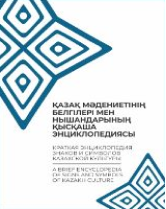




This gesture is called gesture-reality. From the Kazakh language it is translated as “grabbing the collar” (one’s own collar). This gesture expresses: to be surprised, to be astonished, to be squeezed. That is, modality + emotionality. The gesture can function as a replica of the dialogue accompanied by the corresponding text or without it, but in this case with a facial expression of surprise, horror [7, p.20].
An interesting gesture, which origin goes back to the understanding of the collar as a sacred top (three-level model). M.M. Sodnompilov states that “the place of localization of the soul in the costume complex of the Turkic and Mongol peoples was the collar” [8, pp.154-155]. Collared clothing functions as a symbol of the person in Kalmyk culture [3, p. 29]. It is noteworthy that especially the widows of the Khakass remove their collars, and when they remarried, they began to wear clothes with collars. In Kazakh culture the collar is called “zhağa”. The traditional expression says something about its meaning: “ağasy bardyñ – zhağasy bar, inisi bardyñ – tynysy bar” (who has an elder brother – he has a collar, his younger brother his breath): Collar is understood as protection. Clothing with a collar is also part of the tradition of giving something to someone (for example, to person in need) in a time of crisis for a man – mushel jas, as atonement, alms, help. Outer clothing with a collar is an obligatory element of gift exchange at the Kazakh wedding ceremony. The traditional Kazakh gesture of “grabbing the collar” can be interpreted as an appeal to the “vessel of the soul” as a defender against the evil and bad things mentioned in the dialogue.


